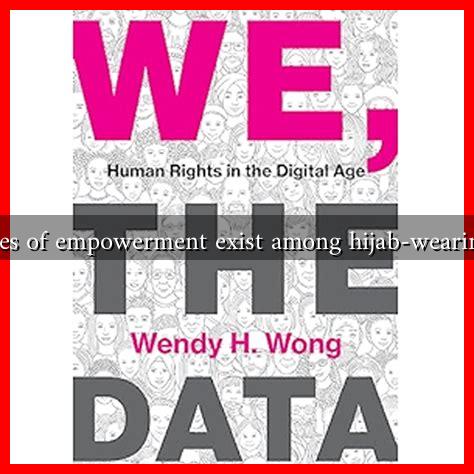-
Table of Contents
- Empowerment Stories Among Hijab-Wearing Women
- The Hijab as a Symbol of Empowerment
- Inspiring Stories of Empowerment
- 1. Ibtihaj Muhammad: Breaking Barriers in Sports
- 2. Linda Sarsour: Activism and Advocacy
- 3. Halima Aden: Redefining Beauty Standards
- Statistics and Trends
- Conclusion: The Power of Choice and Representation
Empowerment Stories Among Hijab-Wearing Women
The hijab, a traditional headscarf worn by many Muslim women, is often misunderstood and misrepresented in various cultures. However, for many, it symbolizes empowerment, identity, and resilience. This article explores the inspiring stories of hijab-wearing women who have defied stereotypes and made significant contributions to society, showcasing their journeys of empowerment.
The Hijab as a Symbol of Empowerment
For many women, wearing the hijab is a personal choice that reflects their faith and identity. It can serve as a powerful statement of autonomy and self-expression. Here are some key aspects of how the hijab empowers women:
- Personal Identity: The hijab allows women to express their cultural and religious identity, fostering a sense of belonging.
- Resilience Against Stereotypes: Many hijab-wearing women challenge societal norms and stereotypes, proving that they can excel in various fields.
- Community Support: Wearing the hijab often connects women to a broader community, providing a support network that encourages empowerment.
Inspiring Stories of Empowerment
Across the globe, hijab-wearing women have made remarkable strides in various fields, from politics to sports. Here are a few notable examples:
1. Ibtihaj Muhammad: Breaking Barriers in Sports
Ibtihaj Muhammad made history as the first American woman to compete in the Olympics wearing a hijab. Her participation in the 2016 Rio Olympics not only showcased her athletic prowess but also challenged stereotypes about Muslim women in sports. Muhammad has become a role model for young girls, emphasizing that they can pursue their dreams regardless of societal expectations.
2. Linda Sarsour: Activism and Advocacy
Linda Sarsour is a prominent Palestinian-American activist known for her work in civil rights and social justice. As a co-chair of the Women’s March in 2017, she used her platform to advocate for marginalized communities. Sarsour’s activism highlights how hijab-wearing women can lead movements and influence change, proving that their voices matter in the public sphere.
3. Halima Aden: Redefining Beauty Standards
Halima Aden made waves in the fashion industry as the first hijab-wearing model to sign with a major modeling agency. Her presence on runways and magazine covers has challenged conventional beauty standards and opened doors for other hijab-wearing women in fashion. Aden’s journey emphasizes that women can embrace their faith while pursuing careers in industries that may not traditionally welcome them.
Statistics and Trends
Research indicates a growing acceptance and visibility of hijab-wearing women in various sectors:
- According to a 2020 study by the Pew Research Center, 62% of Americans believe that wearing a hijab is a personal choice.
- The fashion industry has seen a rise in modest fashion brands, with a 2018 report estimating the global modest fashion market to be worth $277 billion.
- In sports, the number of hijab-wearing athletes has increased significantly, with organizations like the International Basketball Federation (FIBA) lifting bans on headscarves in 2017.
Conclusion: The Power of Choice and Representation
The stories of hijab-wearing women are powerful narratives of empowerment, resilience, and identity. These women challenge stereotypes and redefine what it means to be a Muslim woman in today’s world. Their journeys remind us that empowerment comes from choice, representation, and the courage to stand against societal norms. As more hijab-wearing women share their stories, they inspire future generations to embrace their identities and pursue their dreams without fear.
For further reading on the empowerment of hijab-wearing women, you can explore resources from organizations like Muslim Girl, which highlights the voices and stories of Muslim women around the world.

